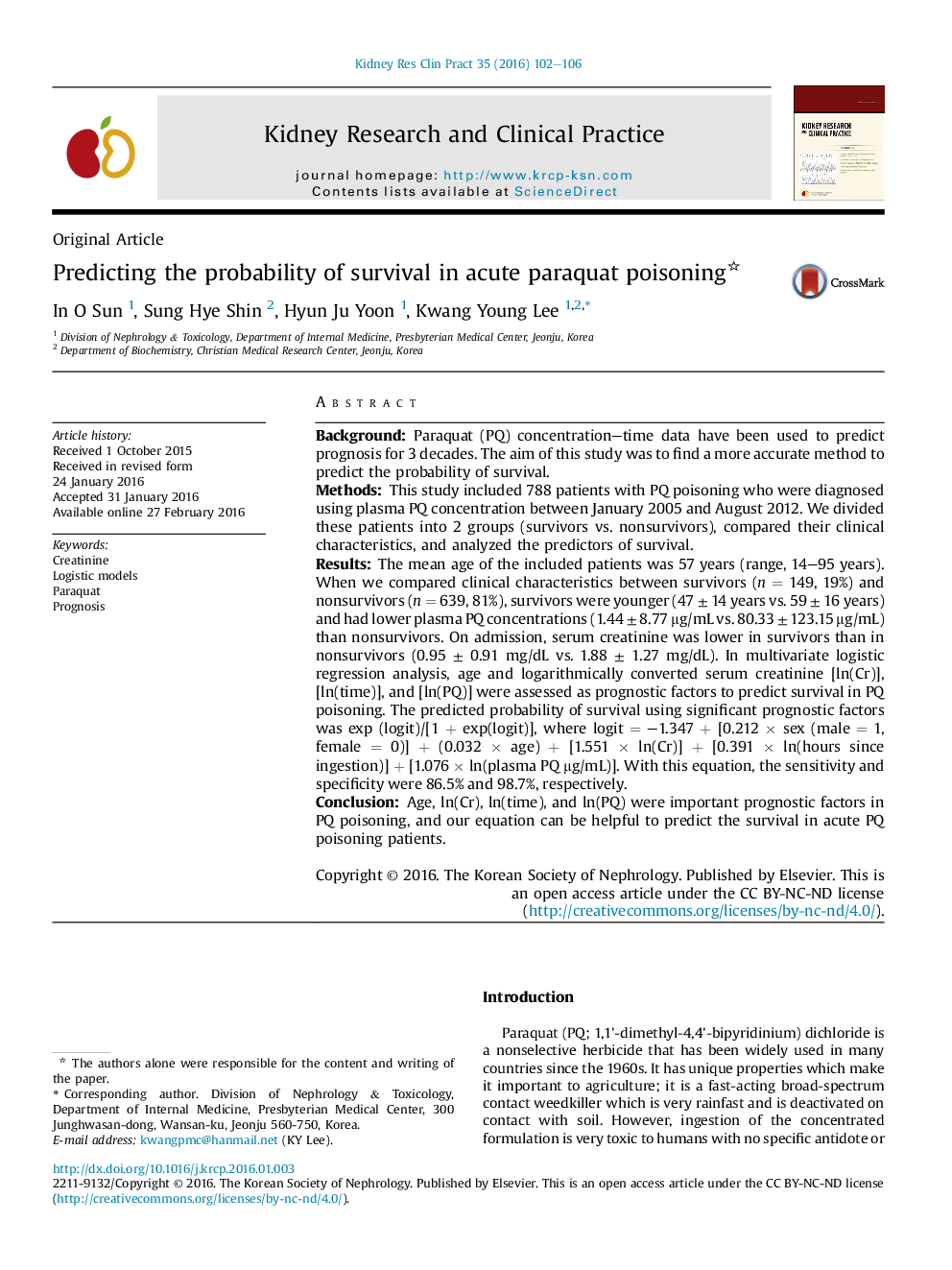| Article ID | Journal | Published Year | Pages | File Type |
|---|---|---|---|---|
| 3891636 | Kidney Research and Clinical Practice | 2016 | 5 Pages |
BackgroundParaquat (PQ) concentration–time data have been used to predict prognosis for 3 decades. The aim of this study was to find a more accurate method to predict the probability of survival.MethodsThis study included 788 patients with PQ poisoning who were diagnosed using plasma PQ concentration between January 2005 and August 2012. We divided these patients into 2 groups (survivors vs. nonsurvivors), compared their clinical characteristics, and analyzed the predictors of survival.ResultsThe mean age of the included patients was 57 years (range, 14–95 years). When we compared clinical characteristics between survivors (n = 149, 19%) and nonsurvivors (n = 639, 81%), survivors were younger (47 ± 14 years vs. 59 ± 16 years) and had lower plasma PQ concentrations (1.44 ± 8.77 μg/mL vs. 80.33 ± 123.15 μg/mL) than nonsurvivors. On admission, serum creatinine was lower in survivors than in nonsurvivors (0.95 ± 0.91 mg/dL vs. 1.88 ± 1.27 mg/dL). In multivariate logistic regression analysis, age and logarithmically converted serum creatinine [ln(Cr)], [ln(time)], and [ln(PQ)] were assessed as prognostic factors to predict survival in PQ poisoning. The predicted probability of survival using significant prognostic factors was exp (logit)/[1 + exp(logit)], where logit = –1.347 + [0.212 × sex (male = 1, female = 0)] + (0.032 × age) + [1.551 × ln(Cr)] + [0.391 × ln(hours since ingestion)] + [1.076 × ln(plasma PQ μg/mL)]. With this equation, the sensitivity and specificity were 86.5% and 98.7%, respectively.ConclusionAge, ln(Cr), ln(time), and ln(PQ) were important prognostic factors in PQ poisoning, and our equation can be helpful to predict the survival in acute PQ poisoning patients.
